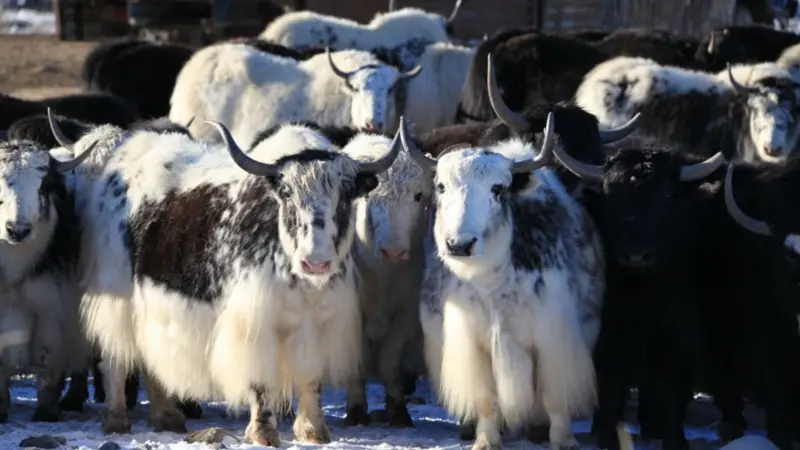Hundreds stranded near Everest are still awaiting rescue after a shock blizzard hit the region, leaving hikers suffering from hypothermia and forcing emergency teams to battle through heavy snow.
At least one hiker has died and more than 200 are still stranded on Everest’s eastern slopes in Tibet, an area popular with climbers and hikers, Chinese state media reported.
Snowfall began on Friday evening and intensified over the weekend. Hundreds of local villagers and rescue workers have been deployed to clear out snow blocking access to the area, which sits at an altitude of more than 4,900m (16,000ft).
Rescuers have guided 350 people to safety in the small township of Qudang, but authorities remain in contact with all the hikers who are still trapped.
Nature photographer Dong Shuchang was among hundreds stranded near Everest during China’s Golden Week holiday. He said the group faced relentless snowfall and freezing temperatures within hours of starting their trek.
“The lightning and thunderstorms [on Saturday] would not stop. The snowfall was so heavy I could hardly sleep,” said Mr Dong.
His group had reached an altitude of 4,600m before deciding to turn back.
“Our windbreakers and raincoats were no match for the snow. We were all drenched,” Mr Dong said, adding that several people in his group of 20 showed signs of hypothermia.
The 27-year-old had been to the Himalayas more than a dozen times but said he has “never experienced weather like this”.
Mr Dong’s escape from the trail was lined with wet snow and falling sleet.
“Everyone was moving slowly. The route was very slippery. I kept falling because of the ice,” he said.
His group spent last night in a hotel room in Qudang, relying on a generator for electricity.
When they left the hotel this morning, the snowstorm had finally subsided.
“We’re just so relieved to get help and support,” Mr Dong said.

Chen Geshuang, who was part of Mr Dong’s hiking group, said the snow was about a metre deep when they began their retreat on Sunday.
“All of us are experienced hikers,” Ms Chen said. “But this blizzard was still extremely difficult to deal with. I was so lucky to get out.”
“This year’s snow was exceptional,” said the 29-year-old outdoor enthusiast.
Another woman told the BBC that her husband, who had been stuck in the snowstorm, was slowly descending from the mountains, but thick snow cover has made his retreat extremely difficult.
“Even for rescuers, it’s not easy- they need to clear snow to make a path,” she said. “I hope my husband’s team reaches [the rescue team] safely.”
She said her husband told her he barely slept in his tent because he was afraid of being buried in the snow.
Another hiker, Eric Wen, told Reuters that three people in his group suffered from hypothermia even though they were adequately dressed.
They hardly slept because it was snowing too hard and had to clear the snow every 10 minutes.
“Otherwise our tents would have collapsed,” he said.

China is in the middle of its week-long National Day holiday known as Golden Week, a peak season for local tourism.
October usually provides clear skies and mild temperatures, making it one of the favoured months to hike in the Mount Everest area.
Many hikers have made their way to the Karma Valley hiking trail, a lesser-known but scenic route to the base of Everest, which also offers a view of the world’s tallest peak.
Although many people attempt to climb the summit every year, it is considered an incredibly dangerous hike.
In recent years it has been plagued by overcrowding, environmental damage, and several fatal climbing attempts.
The wider region is currently facing extreme weather. Neighbouring Nepal has been battered by torrential rains and floods that have killed at least 47 people, blocked roads, and washed away bridges.
On the other side of China, Typhoon Matmo has made landfall on the country’s eastern coast, forcing about 150,000 people to evacuate their homes.
Also read: Cypriot flag raised on Carstensz Pyramid summit
For more videos and updates, check out our YouTube channel


